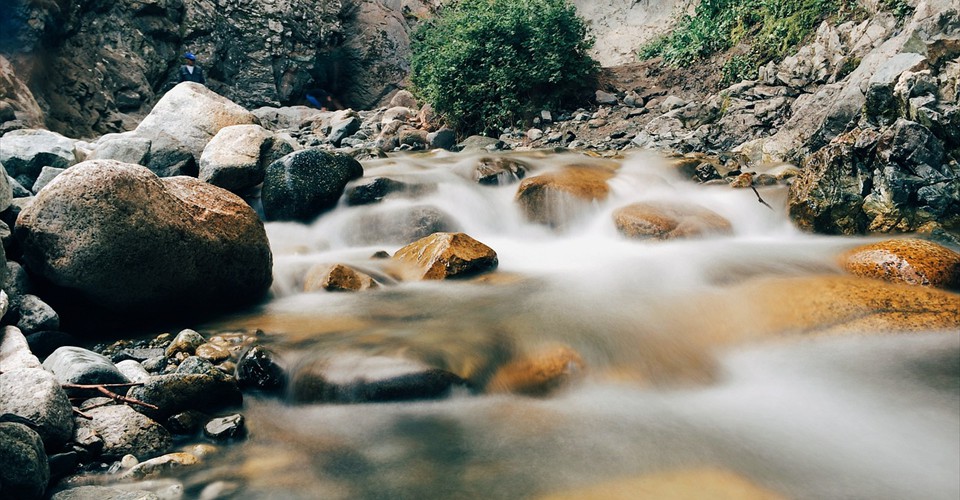Introduction:
The beauty that can be experienced while performing/ listening to the raga of Indian classical music is much more associated with the emotions and appeal of the melody. It has no limit and depends on the spectators how he/she observes, experiences and feels the subject while watching or listening to the music. Rasa is a kind of realization and varies from person to person. "Sundarta Dekhne Walo ki Soch Evum Ankho mai Hoti hy" - The sensual transformation that delights and impregnates all aspects of life is a Rasa erupted while realizing the rendering of raga. In addition, the combination of the melody of the raga and mental well-being of the artist, a wave of imagination is created called the emotion of raga.
Raga itself is budded with its specific characteristics and the melodic structure that defines the affection and creation of the entire universe as Naad- Brahma (cosmic sound). In Indian classical music Rasa is not only considered as the melody structure but also is a philosophy of Naad, a manifestation of the melody with proper grammatical sequencing of Shruti (micro notes) and Swar (notes) as described in the Veda. The feeling of Rasa while listening to the raga as a listener may have different emotions than the artist who is performing the same. The basic and fundamental thing to realize the aesthetic, beauty, appeal and emotion of raga is to be obliterated from personal ego, imbibe and absorb the melody without any judgment.
The combination of Swar and Shruti is varied in different raga even of similar nature or similar ascent and descent while the aesthetic behind these combinations germinated the frequency of emotions in different aspects. The Nature of Madhyamad Sarang is completely dissimilar and variant than Megh even the notes and scale of the both ragas are of same scale aand structure. Puriya, Marwa and Sohani also have different emotions even sharing the same scale, Bhupali and Deskar, Jaldhar-Kedar- Durga, Darbari Kahnara- Adana and so many ragas in Hindustani music having same Swar combination, similar scale and same Aroh (ascend) and Avaroh (descend) but have different nature, variant aesthetics and emotions due to the Ragang and the interconnection of notes used in particular raga. Raga-Rasa is thus the term having a simple meaning of realization of the raga. Is it not the matter of analysis or it is not the matter of comparison what the structure of raga is? what is the Swar combination? or what is the Thaat(group), Jati(category), Gayan Samey(timing),Vadi(main notes), Samvadi(corresponding note), but it is only the matter of realization, the feeing and visualization of the raga at any stage as a performer or the audience.
In Hindustani classical music, the legendary musicologist and the disciple of V N Bhatkhande, Pt. Narayan Moreshwar Khare has discovered the Ragang - a distinct characteristic of the raga commonly used in various categories of the raga. As part of raga Vargikaran (division), he has found 30 distinct Ragang in Hindustani Music which is widely accepted in the late 20th century. Among these thirty Ragang, Malhar and Kahara are the most prominent Ragang and have few similar conjunctions that create the transition between the raga where as Sarangaang is completely different and represent the joyfulness in the raga. It is realized that the interrelation between the raga and Rasa in Hindustani classical music plays a great role to appeal the emotions and establish the melody even if the structure of the notes is the same but erect the different Rasa. Common phrases of Malhar and Kanhara are ga ma Re Sa but the transition and the supporting notes, Meed, Kaan which plays a great role in framing the melody that makes the emotional appeal different even the same phrase of notes are sung together. Naykai Kanhar is one the best example where Kanhara meets Malhar, the same notes Sa Re ga ma in Aroh goes with Kanharang, and Pa mga ma Re Sa comes with Malharang. This phase (ga ma Re Sa) of Nayaki is sung/played on the basis of Malharang even the same phrase is a part of Avaroh which also represent the Kanharan but not used in Nayaki and it is strictly forbidden to use Kanharaang in Avaroh while singing ga ma Re Sa. In the second half scale of the Raga, combination of Sarang and Malhar is blended to form a soothing melody. Kanharabasically have the characteristics of boldness, seriousness and stability on the melody whereas Malhar also have the similar nature but sometimes the romance, fear altogether reflects the maturity and stability in melody. Sarang is a reflection of joyfulness, romance and the adornment of the Nayak-Nayika must dominantly represent the emotions and aesthetics of love and affection (Shringar Rasa).
Objectives of the Study:
The basic objective of the study of the raga with relation to emotions and emotional appeal is to identify the nuances and fineness of the raga as well as its melodic structure and the notes combination of three Ang are being used in the same raga. For this research, five ragas are taken where Malhar-Kanhara, Malhar -Sarang or Kahnara-Sarang are used i.e Raga Nayaki Kanhara, Suha, Saguhari, Sahana, and Devsakh. Nayaki Kanhara is the prime raga were major experiment is done because the melody of the Nayaki Kanhara is a combination of three Ragang (Kanhara, Malhar and Sarang). For the understanding of the aesthetics and blending of Ragang Samparkriti Raga Suha, Saghurahi, Sahana and Devsakh are taken because these ragas are created with either of these Ragang Malhar, Kahnara and Sarang. The objective of the study will be i) similarity and distinctness of the emotions and appeal in Malhar, Sarang and Kanhar Ang, ii) an impact of Malhar, Sarang and Kanhara Ang if used in same raga and its uses in terms of phrases and micro notes while creating a melody, iii) analysis of the transition of phrase of Malhar, Sarang and Kanhara in Nayaki Kanhara, how Gandhar- Nishad plays a role in conjoining the Ragang. To establish the above-mentioned objective qualitative methodology will be used to analyze the Swar combination of all five ragas along with the basic framework of Kanharaand Malhar Ang. Review of few Bandishes and musical rendering of Pt. Rajan Sajan, Ustad Rashid Khan, Pt. Bhimsen Josh. Pt, Jasraj, Ustad Aamir Khan and few other renowned vocalists will be carried during the qualitative analysis. Notes combination Re Re Sa ni Sa Re, ga ma Re Sa, Re Pa, ma Pa ni Pa Sa, Pa Ni Sa Re Sa will be examined with software Logic pro X to examine the notes and its frequency and try to identify the similarity of notes and its rendering by the artist, it connecting notes and distinctness in Gharana to Gharana style. Further, self-experience and live performance/demo will be recorded to understand and evaluate the emotions, appeal of both Ang in Raga Nayaki Kanhara.
Raga Nayaki Kanhara:
Raga Nayaki Kanhara is a raga from the bunch of Kanhara-ang raga that falls under the Kafi Thaat. Nayaki is one of the famous types of Kanhara supposed to be composed by Gopal Nayak in late 12th century which share a similar scale to Raga Suha, Shahana and Devsakh and Sughurai. The most common and similar raga to Nayaki Kanhara is Suhawhich is also called as Samprakritik raga.
The Raga Nayaki Kanhara is the complex raga with the combination of three Ragangs, Darbari in Purbang (first phase), Sarang in Uttrang (Second half) and the mixture of Malhar in the center of the scale. Phrases from these three main ragas were webbed to create the unique melody of Raga Nayaki Kanhara. Ni Sa Re Rga-- ma Re Sa or Re ni Sa Re ga... m Re Sa ni Sa Re.., phrases of Raga Darbari, Re....Re Pa ma mga ma Re, Se Re.. of Miya Malhar and ma Pa ni ma Pa, Pa Ni Sa of Sarang were adopted and fused in such a way to create a distinct melody of Nayaki. The notes combination of this raga is unique of its kind and need to take guidance from the expert- teacher before its recital. Special emphasis on Komal Gandhar is the major part of this raga. In Aroh, the Komal Gandhar is sung with the support of Suddh Rishav as similar as in Darbari but in Avaroh the same Komal Gandhar is sung according to Malhar-ang, a Kaan of Suddh Madhyam to Komal Gandhar to Suddh madhyam to Suddh Rishav is the ascending path of this Raga.
Raga Nayaki Kanhara is one of the popular and prominent raga of Kanhara-ang of Hindustani classical music. The Vadi of the Raga is Madhyam and Sambadi is Shadaj and its singing time is midnight or the third phase of night. The Jati of the raga is Shaddav- Shadav where Dhaivat is completely abandoned in Aroh and Avaroh. Both forms of Nishadare used in raga but the position of Suddh Nishad is restricted only in Aroh and used as per Sarangang ( Pa Ni Sa Re, Pa ni Pa Ni Sa Re, Re ni Sa...Pa ni Pa ). Komal Nishad is used freely in both Aroh and Avaroh but in Vakra Swaroop(crooked position) i.e Pa ni Pa Sa , Ni Sa Re Sa ni Pa, ma Pa ni Pa.. Sa .. Crooked and wry position in raga is the common transition where three Ragang are blended to make Nayaki Kanhara and created a unique melody that the parental Raga where those phrases are taken form. Re ni Sa Re, ga ma Re Sa Re.., Re Pa , ga ma Re Sa .. ga ma Pa ni Pa , ni Pa ma Pa ga ma Re , Pa ,, ni Pa ma Pa ni Pa Sa.., Pa Ni Sa Re Sa ,, are some common phrases of Nayaki Kanhara.
Aroh: ni Sa Re ga ma Pa, ga ma Pa ni Pa, Sa
Avaroh : Sa Pa ni ma Pa , ga ma Re Sa
Pakkad: Re ni Sa.. Re ga... ma Re Sa Re, Re Pa, ma Pa ni Pa, ga ma Re Pa, ni Pa Sa... PaNiSaRe..niSa, Pa ni ma Pa ga ma Re Sa Re...
Bandish: Chota Chyal - Teen Taal
St. Ja Ja Re Ja Kagawa, Mora Sandeshwa leja ....ll
Ant. Tumko Pukaru Nis Din Dhyawu , Aaj Piharawa Aa Ja... ll
Badha Khyal
St. Kaise Samajhau Jiya Ko Aab Mori ll
Ant. Nis Din Maika Juga Sam Bitat,
Nahi Katat Din Raina Sakhi Re... ll (Bada khyal is a bandish of Pt. Narayan Laxman Gune)
Note: The notes Sa represent Shadaj, Re – Suddh Rishav, ga – Komal Gandhar, ma- Suddh Madhyam, Pa- Pancham, dha – Komal Dhaivat, Dha- Suddh Dhaivat, ni- Komal Nishad, Ni- Suddh Nishad -
@ copyright
https://www.musicbanaras.com/2024/04/raga-jaijaiwanti.html














